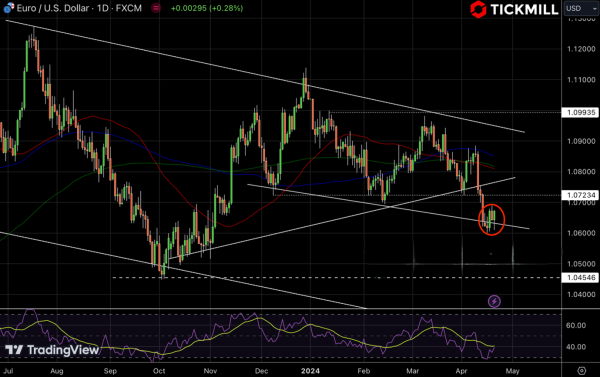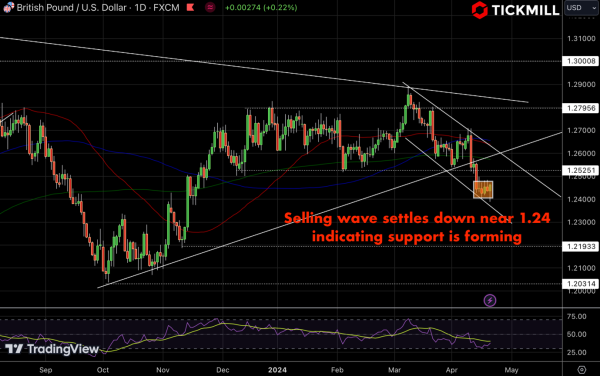EUR and GBP Stage Recovery Despite Escalating Fed Hawkish Tone
Despite the contentious backdrop of geopolitical risks and the Federal Reserve adopting a more hawkish stance in its statements, EUR/USD managed to stage a recovery above the 1.0650 mark. The flight to the safe embrace of the US Dollar (USD) at the start of the week momentarily dented the Euro's (EUR) spirits, yet it swiftly rebounded:

Thursday opened with the Euro on the offensive, galvanized by Christine Lagarde's resolute stance on combating inflation. Her proclamation, "The game is not over," infused a dose of uncertainty into the interest rate narrative, eliciting a bullish response from the Euro as higher rates beckon foreign capital like moths to a flame.
However, the Euro's ascent hit a snag near the psychological barrier of 1.0700, triggering a volte-face as dissenting voices within the ECB choir sang a different tune. François Villeroy de Galhau, bearing the standard of the Banque de France, led the charge for rate cuts, warning of growth stagnation if action is delayed, leaving the ECB perilously lagging behind the economic curve.
Joining the chorus, Luis de Guindos adopted a measured tone, hinting at rate cuts contingent on evolving data, while Joachim Nagel bet on a June rendezvous with rate reduction despite resilient inflation metrics.
The Euro's retreat gathered steam post-Philadelphia Fed Manufacturing Survey bombshell, which unveiled an unexpected surge in regional inflation pressures. Coupled with unyielding US labor market resilience as indicated by stable Initial Jobless Claims, the murmurs of a hawkish Federal Reserve echoed louder.
Atlanta Fed President Raphael Bostic, embodying patience, forecasted interest rate cuts later in the year, embracing a gradualist approach to inflation normalization. Meanwhile, New York Fed President John Williams stood firm, dismissing the urgency of rate cuts and asserting the adequacy of current monetary policy.
Across the pond, the British Pound clung to a fragile lifeline near the 1.2400 mark against the USD, grappling with its lowest ebb in nearly five months. Despite the Dollar Index (DXY) teetering around the pivotal 106.00 level, the Pound found solace amid the Fed's hawkish overtones:

In the economic caldron, the United Kingdom's Retail Sales report unveiled a tale of contrasting fortunes, with stagnant growth juxtaposed against divergent consumer spending patterns, painting a nuanced picture of the repercussions of interest rate dynamics.